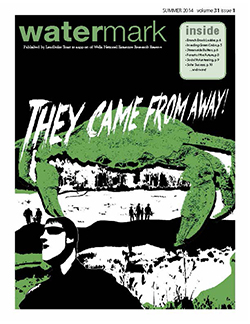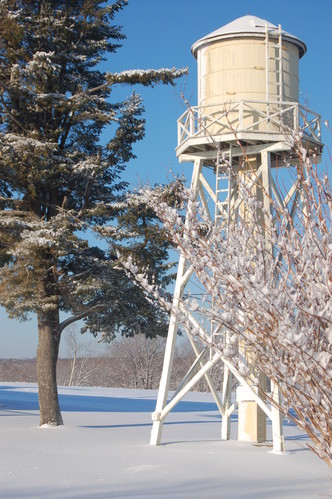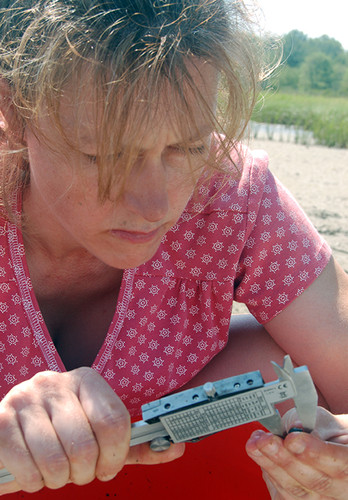The Wrack
The Wrack is the Wells Reserve blog, our collective logbook on the web.
The Wrack is the Wells Reserve blog, our collective logbook on the web.
 In 1989, after a few years away, my wife and I moved back to Maine. Just a few months earlier, the Maine Supreme Court had handed down its “Moody Beach decision,” confining public use of privately owned beach property to the colonial era’s permitted uses of “fishing, fowling and navigation.” As someone with a profound love for the Maine coast, I read the court’s decision with great personal and professional interest.
In 1989, after a few years away, my wife and I moved back to Maine. Just a few months earlier, the Maine Supreme Court had handed down its “Moody Beach decision,” confining public use of privately owned beach property to the colonial era’s permitted uses of “fishing, fowling and navigation.” As someone with a profound love for the Maine coast, I read the court’s decision with great personal and professional interest.
For most of my career, I have worked to conserve special places in Maine — to protect natural resources and to provide the public with access to the coast. Realizing that 2014 would mark 25 years since “Moody,” I organized a public lecture series so people could better understand and appreciate the legal issues surrounding public access and private ownership of coastal lands.
This summer and fall the Reserve hosted four evenings that involved all the key players from “Moody” and subsequent court cases dealing with coastal access in Maine. Each time, we filled the auditorium to capacity.
It was a great experience for all of us. Together we learned that Maine is not an anomaly; other states have access conflicts and must also contend with legal ambiguities over shoreline use and ownership.
 Nik's Notebook: Welcome, Invaders!
Nik's Notebook: Welcome, Invaders!Maine has historically (and, at times, comically) viewed those "from away" with great suspicion and even scorn. Rightly so, when it comes to invasive, non-native species like mouse ear snails, red algae, and European green crabs that all now impinge on our Gulf. These diabolical intruders, and many more, are a horror story for our coast, but they're just one tale in this Summer 2014 issue of Watermark, your beach reading from the Wells Reserve at Laudholm.
Because while these aquatic invaders may come "from away," so too do our annual fresh-faced summer interns, our many excellent research partners, and continual new ideas. And truly, Southern Maine's beach towns would be ghost towns without our summer tourists. So we welcome all these new arrivals to the Wells Reserve at Laudholm and hope they take back home with them, from their visits or even just by reading this summer newsletter, a little bit of "the way life should be." Or could be, anyway, with a little more science, education, and conservation.
Have a wonderful summer. Do come over; it's your Reserve!
 The Wells Reserve at Laudholm is special. Not a day passes that we don’t think of this unique place as a gift to those of us who work here, to the wildlife that abounds here, to the coast of Maine and to the international community of estuaries, and of course to our members and to the public.
The Wells Reserve at Laudholm is special. Not a day passes that we don’t think of this unique place as a gift to those of us who work here, to the wildlife that abounds here, to the coast of Maine and to the international community of estuaries, and of course to our members and to the public.
Because so much of our operating support comes from our members and donors, we believe it is in the best service to you and your gifts that we operate as efficiently and effectively as possible.
Contents of the Fall 2012 issue of Watermark include…
 Jennifer Dijkstra was always going to be a scientist. As a child summering on Grand Manan, she clambered over the island’s rocky shoreline grabbing fistfuls of seaweed and peering into shallow waters to spy on crabs and snails. This summer she’s been doing the same thing, but with three degrees of separation (BS, MS, and PhD), she now calls her objects of interest Ascophyllum, Carcinus, and Littorina.
Jennifer Dijkstra was always going to be a scientist. As a child summering on Grand Manan, she clambered over the island’s rocky shoreline grabbing fistfuls of seaweed and peering into shallow waters to spy on crabs and snails. This summer she’s been doing the same thing, but with three degrees of separation (BS, MS, and PhD), she now calls her objects of interest Ascophyllum, Carcinus, and Littorina.
For many budding biologists, the journey from tide pool playground to salt marsh research transect stops short. For Dr. Dijkstra, research scientist at the Wells Reserve, the dream came true.
Since her arrival at the Wells Reserve at Laudholm in 2008, research scientist Dr. Jennifer Dijkstra has followed two main lines of inquiry. In addition to investigating seaweed, crab, and snail interactions in the salt marsh, she has also looked into how climate change may affect mercury accumulation in coastal food webs.
When Jenn started her post-doctoral fellowship, research director Michele Dionne asked her to work on mercury. "It was a little daunting," Jenn admits. "I had never worked on contaminants, and mercury is not a straightforward contaminant."
Contents of the Summer 2012 issue of Watermark include…
Contents of the Fall 2011 issue of Watermark include…